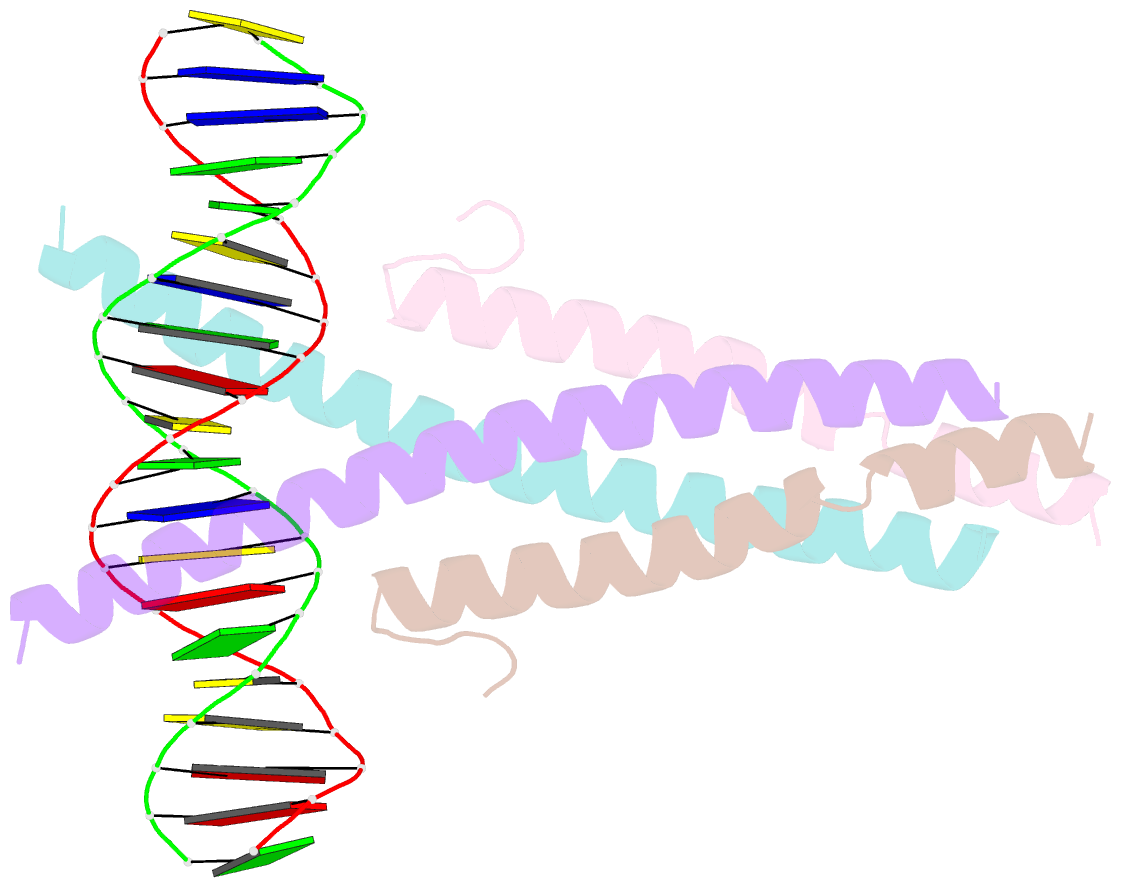Summary information and primary citation
- PDB-id
- 5zko; SNAP-derived features in text and JSON formats;
DNAproDB
- Class
- transcription-DNA
- Method
- X-ray (3.05 Å)
- Summary
- Crystal structure of the crtc2-creb-cre complex
- Reference
- Song Y, Zhai L, Valencia Swain J, Chen Y, Wang P, Chen L, Liu Y, Xiang S (2018): "Structural Insights into the CRTC2-CREB Complex Assembly on CRE." J. Mol. Biol., 430, 1926-1939. doi: 10.1016/j.jmb.2018.04.038.
- Abstract
- The cAMP response element (CRE) binding protein (CREB) is central in the transcription regulation by cAMP, and the CREB-regulated transcriptional coactivators (CRTCs) play critical roles in CREB-mediated transcription activation. Upon stimulation, CRTCs translocate into the nucleus and complex with CREB on CRE promoters to activate target gene transcription. Their physiological importance is underscored by their function in energy balance, long-term memory, longevity and other processes. The CREB binding domain on CRTCs has been mapped, which interacts with the CREB basic leucine zipper domain that also mediates interaction with CRE-containing DNA. We report here crystal structures of a complex containing the CRTC2 CREB binding domain, the CREB basic leucine zipper domain and a CRE-containing DNA. The structures revealed that CRTC and CREB form a 2:2 complex on CRE-containing DNA, and CRTC interacts with both CREB and DNA through highly conserved residues. Structure-guided functional studies revealed that both interactions are crucial for the complex assembly and CREB stabilization on DNA. Interestingly, we found that the CRTC-DNA interaction confers selectivity toward the intrinsic DNA shape, which may play a role in selective transcription activation of the CRE genes.





